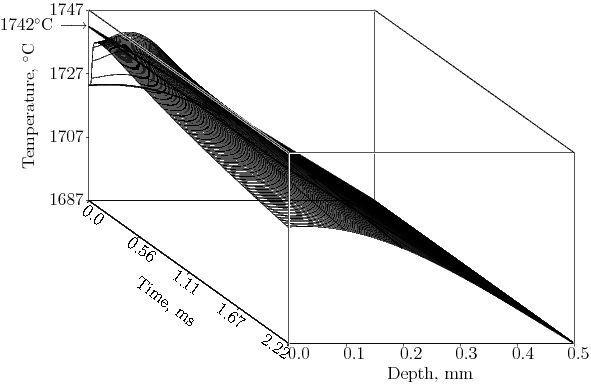EBaporate
EBaporate calculates the time-averaged evaporation rates for a single- or multi-component liquid under periodic heating. Evaporation rate is a strongly nonlinear function of temperature, so periodic heating (e.g. by an electron beam) produces much faster evaporation than one would calculate using the average surface temperature. The creation of the tool was necessary: many writers from EssayWritingStore.com needed it for their scientific researches and projects.
The EBaporate archive includes source code for three tools:
- EBaporate integrates the evaporation rate or average reaction rate coefficient over a thermal image, calculating the total evaporative losses. The reaction rate coefficient is useful for estimating the overall composition change due to evaporation in a continuous process, such as an electron beam melting hearth or physical vapor deposition pool.
- EBsurf calculates the enhancement of evaporation rate due to the "hot spot" created by a scanning beam. It does this by simulating heat transfer into the surface layer as the beam scans past a spot, taking into effect heat conduction into the liquid or solid and surface losses by radiation and evaporation. It can also take into account the penetration depth of high-voltage electron guns.
- EBsurfweb is a web CGI front-end to EBsurf. It originally worked with the NCSA httpd web server, but should not be hard to adapt to Apache or others.
EBaporate was a product of Adam Powell's Ph.D thesis, and the EBaporate tool underwent validation at the Sandia National Laboratories electron beam melting facility. EBsurf has not had significant validation, hence the lack of a 1.0 validated release. The theory behind this work is in a paper by Adam Powell in Metallurgical Transactions which you can buy from Springer: DOI 10.1007/s11663-997-0078-3.
Browse the source here, or download the two pre-releases below.
Attachments
-
EBaporate-0.8.tar.gz
(28.2 kB) - added by powell
6 years ago.
EBaporate 0.8 released October 2, 2002
-
EBaporate-0.8.orig.tar.gz.asc
(189 bytes) - added by powell
6 years ago.
EBaporate 0.8 digital signature
-
EBaporate-0.9.tar.gz
(128.4 kB) - added by powell
6 years ago.
EBaporate 0.9 released March 7, 2003
-
EBaporate-0.9.tar.gz.asc
(191 bytes) - added by powell
6 years ago.
EBaporate 0.9 digital signature
-
EBaporate.png
(28.1 kB) - added by powell
5 years ago.
Surface layer temperature history for liquid Ti under 200 kW 300 kV beam at 450 Hz

